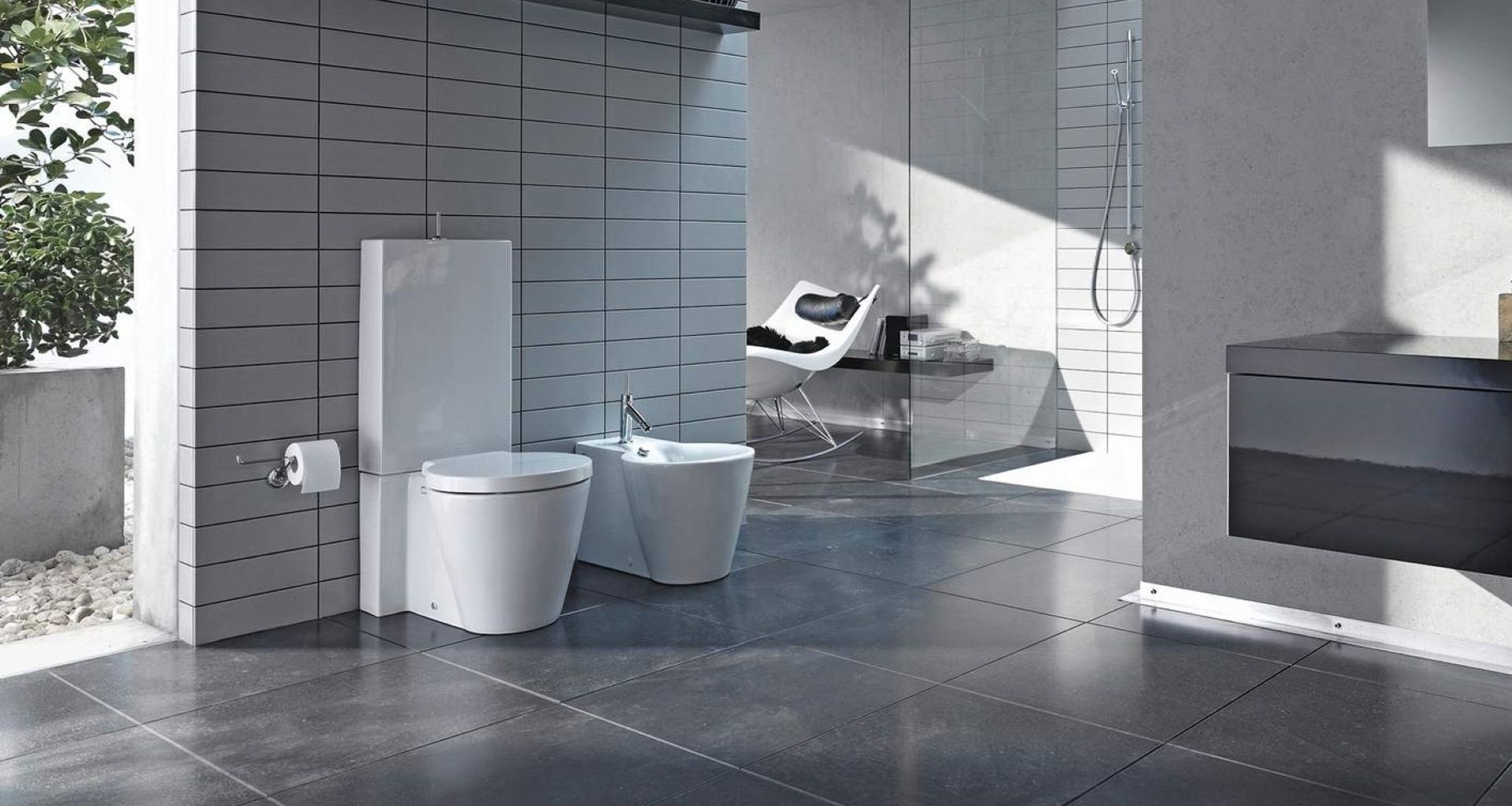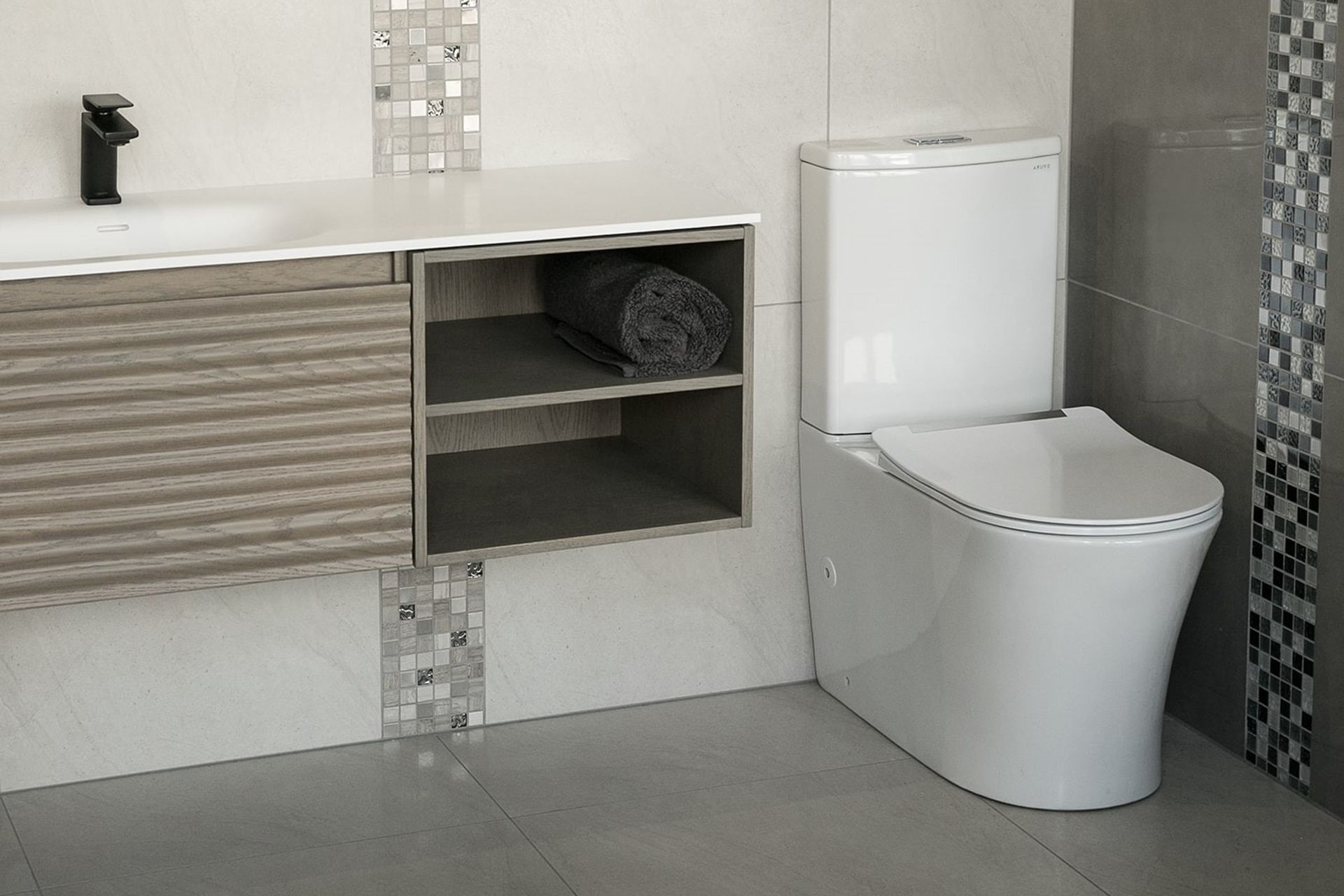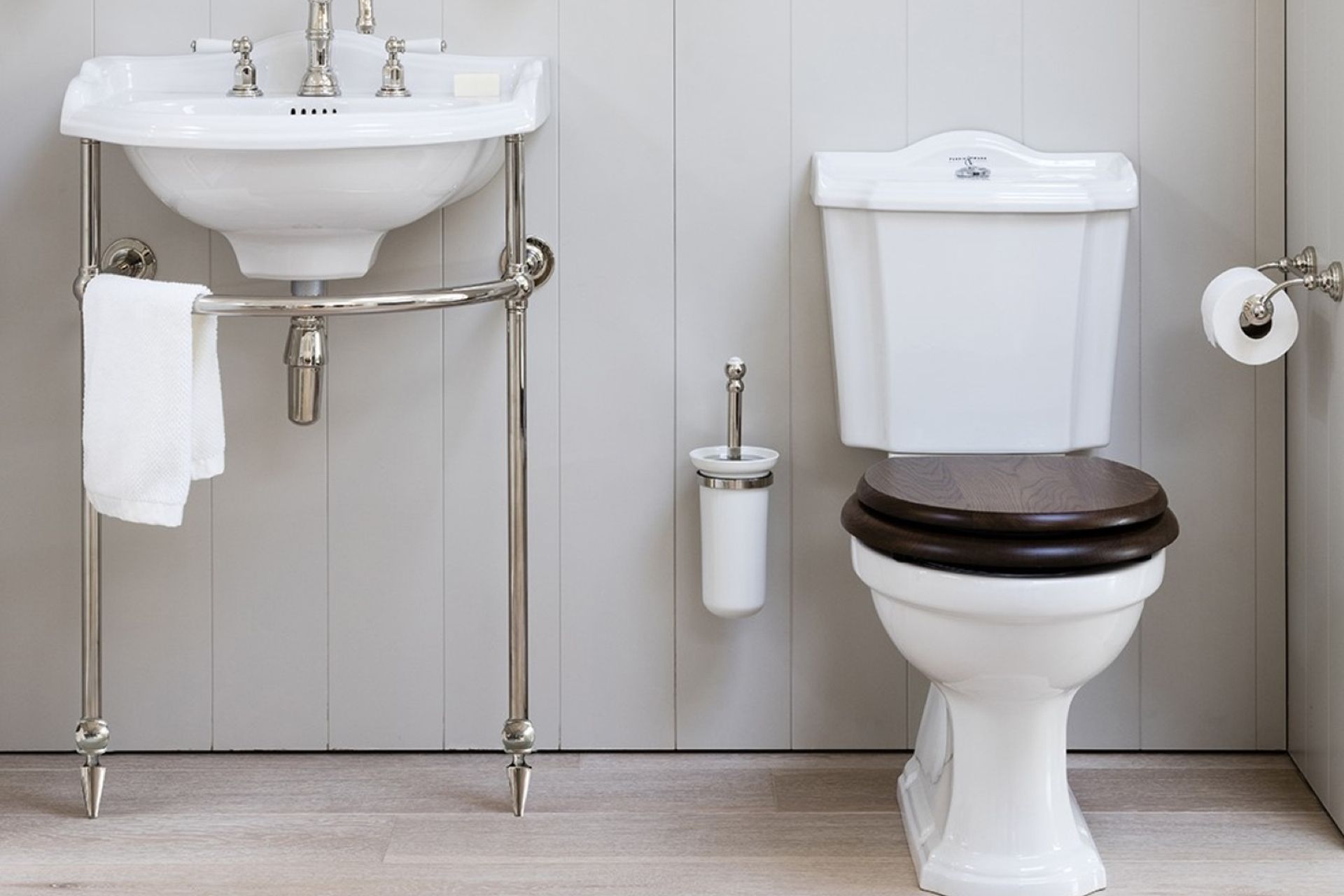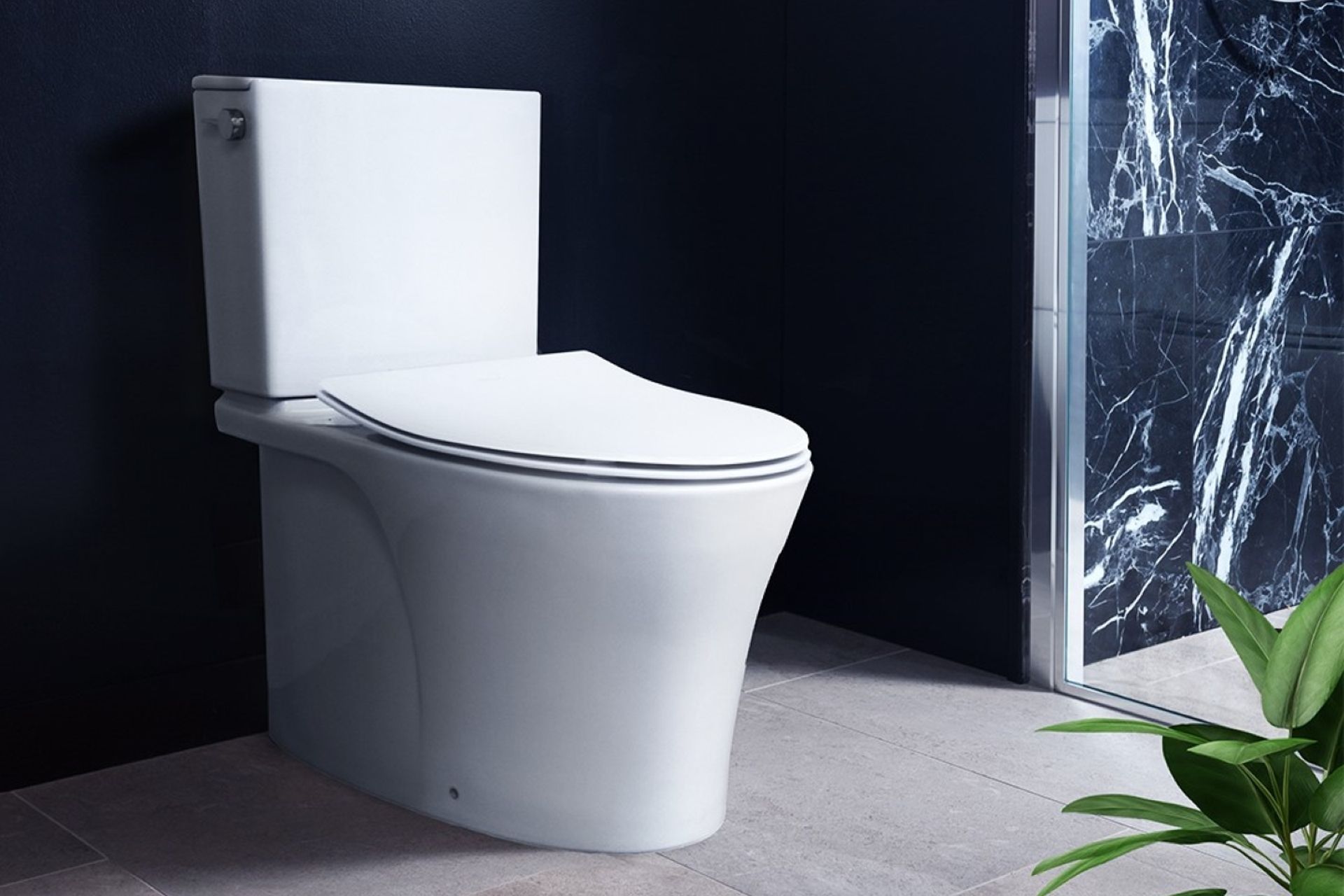The cost of a new toilet in New Zealand: A Buyer's Guide for 2024
Written by
10 April 2024
•
8 min read

When buying a new toilet, most homeowners will want a good solution that meets all their needs with respect to comfort, aesthetics and functionality. The next challenge is understanding exactly what you'll need to spend to get those features you need and want so you can plan your budget accordingly. As you'll soon see, there are more influencing factors than you might appreciate which could alter your thinking and ultimately, your final choice.
The average cost of a toilet in New Zealand
The average cost of a standard toilet in New Zealand is around $400 - $500. For this price, you're typically looking at a floor mount, back to wall toilet — probably the most common type found in homes right throughout the country.
In and around this, you'll find a wide range of products on both sides of the spectrum. This includes the likes of a very basic toilet from about $200 to state-of-the-art wall hung smart toilets for over $5,000.
There are many reasons for the extreme range in prices that have to do with materials, features, brand etc (more on this later). Understanding what represents the best value for money for you is about prioritising your own needs and wants and having a clear idea of what this will cost you.
What makes a good toilet for the home?
As just discussed, what makes a "good" toilet is dependent on one's own circumstances and preferences, however, there are some universal qualities and traits that nearly everyone will want to have.
1. Durability
Durability is crucial for a toilet because it ensures the fixture can withstand years of daily use without frequent repairs or replacements, which can be both inconvenient and costly. This is especially important for large households with kids where higher, more rigorous use is expected.
2. Design and appearance
Design and appearance have become more significant for a toilet in modern bathroom design contributing to the ambience of a bathroom. Many homeowners have a strong preference for a toilet suite that will complement their interior styling, not detract from it.
3. Comfort
Comfort has become a more prominent factor, encompassing a variety of traits like the height of a toilet, the size and shape of the toilet seat and the feel of the material used. It also includes features like seat warmers and bidet features for self-cleaning.
4. Water efficiency
In an era where sustainability is at the forefront of nearly everything that we do, water efficiency is of utmost importance. Toilets in New Zealand typically come with a WELS star rating with 1 star being the least efficient and 5 stars being the most, making it much easier to compare one from another.
5. Features
A toilet's features are a great way to distinguish one model from the next with new and exciting features coming out all the time. Indeed, some features, like dual flush toilets and soft close seats, have become almost standard inclusions while others like seat warmers in smart toilets are becoming increasingly prevalent.
Related article: How to choose a toilet — a complete guide
Factors that influence the price of a toilet
Now that you've got an idea of what a good toilet looks like in today's market, it's time to look at how these traits and qualities will impact the price you'll have to pay.
1. Type of toilet
The type of toilet that you're looking at will have a direct bearing on its price. The most affordable are typically the traditional close coupled toilet which you can find for as little as $200. A standard floor mount, back to wall toilet is priced from around $400.
For sleek wall hung toilets, however, you'll probably be starting at prices of around at least $450 for the toilet pan only. If you need to buy a full kit that comes with the in-wall cistern, you can expect to pay anything from $800 and above.
Top-of-the-line smart toilets will start at $5,000 - $6,500+ for those who simply have to have the best of the best.
2. Materials
The material used in manufacturing a toilet significantly impacts its price, with porcelain being the most common and cost-effective option, typically ranging from $200 - $600 for standard models. Vitreous china, a subset of porcelain that is glazed to be more durable and resistant to spills and stains, can elevate the price to between $300 - $800, fast becoming a very popular choice in New Zealand. At the higher end of the spectrum, toilets made from premium materials like high-grade ceramics or composite materials, which promise enhanced durability and unique finishes, can cost anywhere from $800 to over $1,500.
3. Features
The specific features a toilet has can directly impact the price. This includes things like soft close seats, special coatings for better hygiene and cleanliness, rimless flush systems and more. Generally, the more features a toilet has, the more expensive it will be.
Toilets with bidet seats, for example, will usually start from $1,500. High-spec smart toilets which cost at least $5,000 as already mentioned, will come with inclusions like wash functions, temperature control, night lights, deodorisers, quick-release seats, smart control apps and numerous other features.
4. Brand
Brand reputation undoubtedly has an impact on the price of a toilet, making it another important factor to think about. Well-established global brands tend to offer most of their products in the mid to high-end range and have a track record of performance and trust that allows them to do so. These will often be toilets that start from around $400.
You'll also have some brands that are exclusively high-end, typically offering products designer inspired choices using premium materials with the latest features. For these, you can expect to see products from $1,000.
The cost of installing a toilet
One important factor that we haven't touched on yet is the cost of installing your toilet by a professional plumber or specialist, which is always a significant part of any budget. Toilet installation costs can vary widely depending on several factors, including the complexity of the job, the type of toilet being installed, and the rates charged by local plumbers or contractors.
For a standard replacement where no major plumbing modifications are required, it'll likely be a few hours of work and a few hundred dollars — starting from around $300. However, for more complex installations, such as those involving new plumbing lines, the relocation of the toilet, or the installation of wall-hung models that require in-wall cisterns, costs can significantly increase and easily reach $1,000 or more. These costs can also be influenced by local labour rates, the need for any additional bathroom renovations like tiling in and around the toilet, and whether the installation includes the removal and disposal of an old toilet. It's always best practice to get multiple quotes from different professionals.
Other things to bear in mind
Along with everything already covered about the upfront costs of buying and installing a toilet, there are a few additional things you should think about before making your final decision.
1. Long term costs and savings
A toilet is a long-term investment and is something that you'll want to last years, even beyond a decade ideally, so needs to be viewed in the same way. While it's always tempting to go for the most cost-effective option to save money, if that option only lasts half the time of a slightly more expensive but more robust alternative then the latter becomes the cheaper option in the long run. Also, some features like those with high water efficiency, might cost more initially, but again will help save you money in the long run with lower utility bills.
2. Ongoing maintenance and care
Similar to the previous point, a low quality but cheap toilet that breaks down will cost you more in the long run compared to a higher quality option that doesn't but is more expensive. Repair costs like these can be fairly substantial, as you'll often need the job done quickly which means you'll pay a premium for emergency plumbing call-out. Low quality options also might be more prone to staining and grime, which may mean more regular cleaning with more cleaning products required, more often. This may seem a small issue on the face of it but over the lifespan of a toilet, it can quickly add up.
3. Warranties
Toilet suites will come with different warranties which may range from anything from 2 years to 25+ years. Some products will also have different warranties for different parts, like a 10 year warranty for the pain and a 2 year warranty for the seat or flushing mechanism. It's definitely something to take note of and compare your options. A long warranty is potentially a show of confidence from the manufacturer which can give you peace of mind about your purchase. At the same time, it's important to be sure to read the fine print and ask questions on anything you're not sure about so you know exactly what it covers.
Buying a toilet that represents good value to you
Having covered all the main contributing factors, you hopefully have a better understanding of what your toilet replacement project will cost. Whether you're after a solid close coupled toilet for the family home or a stylish wall hung toilet for an ensuite of the master bedroom, you'll find there are plenty of options to choose from that'll deliver a great return on investment in the short and long term.
Related article: The best toilets in New Zealand for modern and stylish homes



